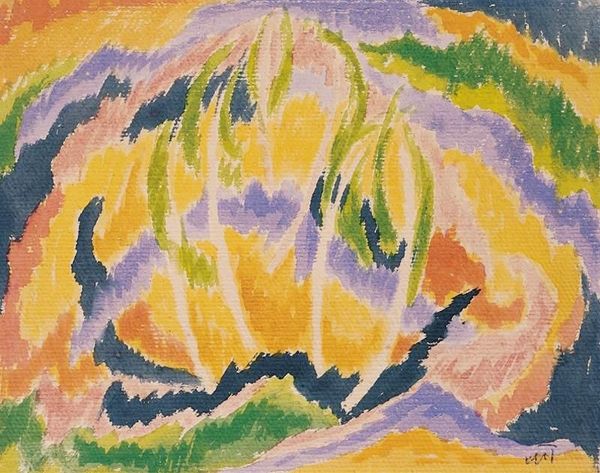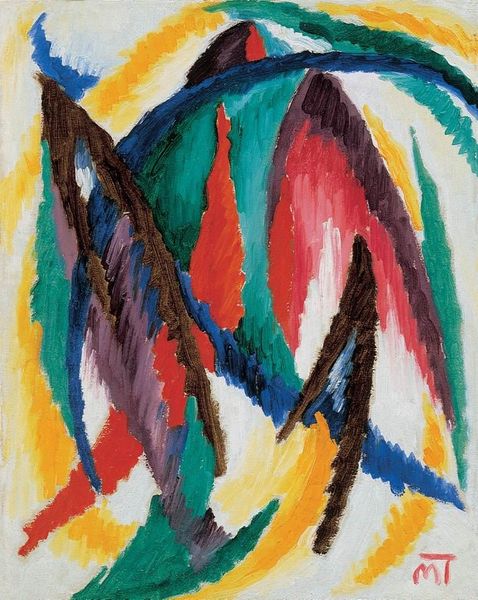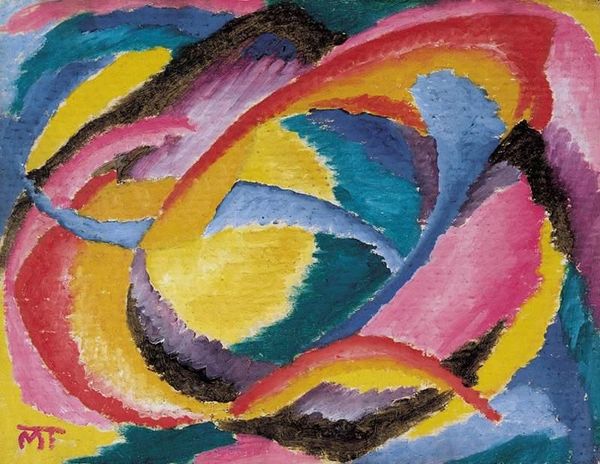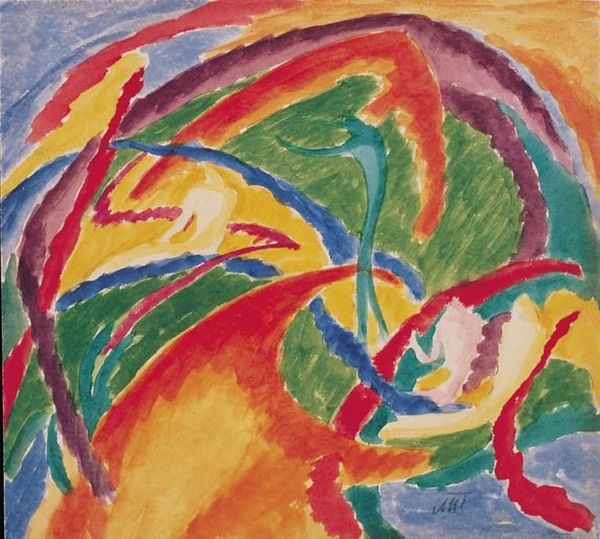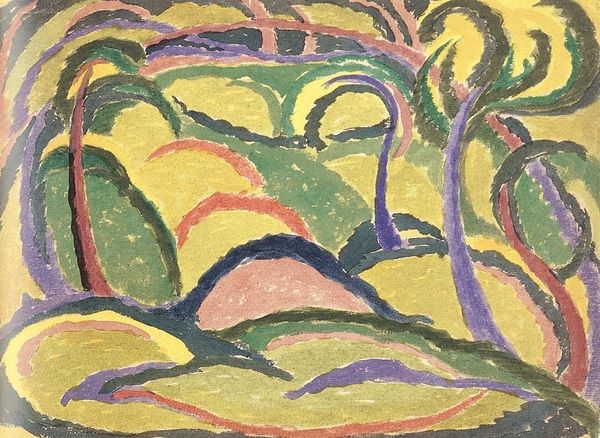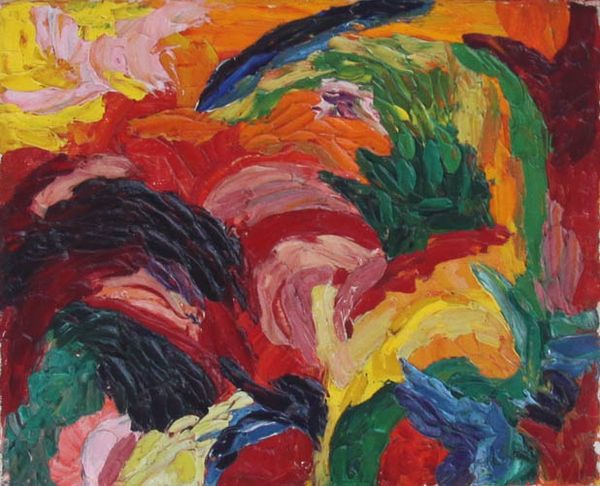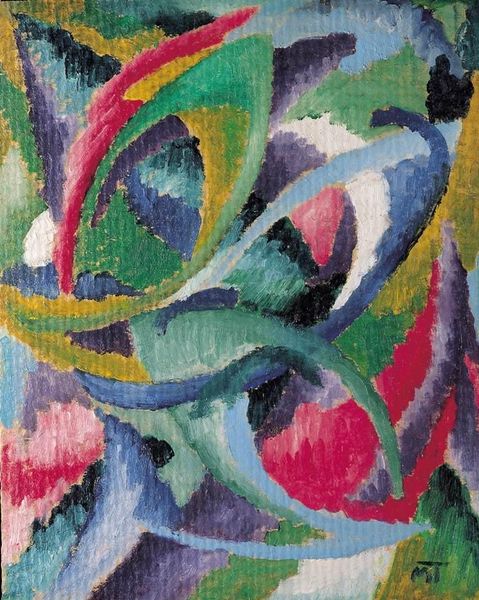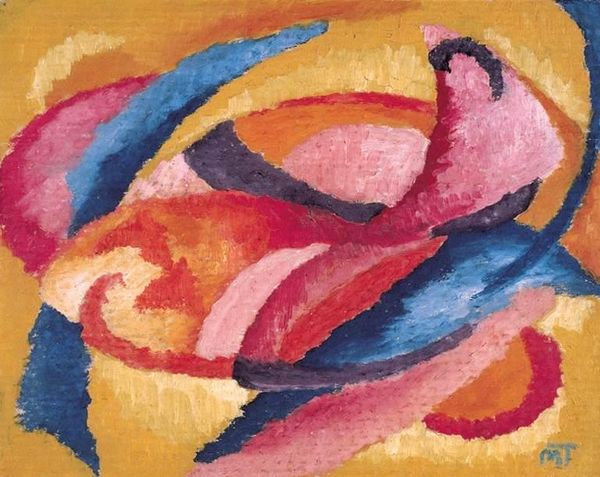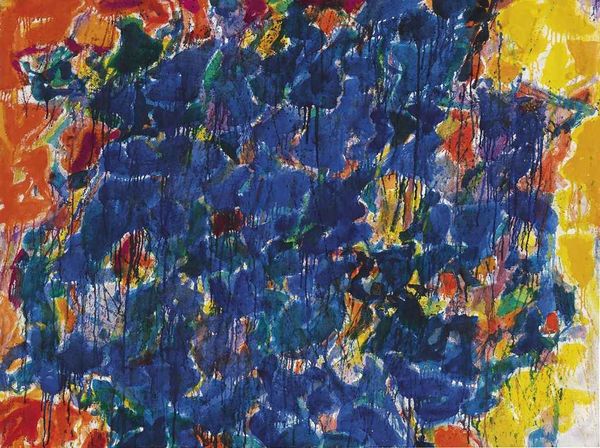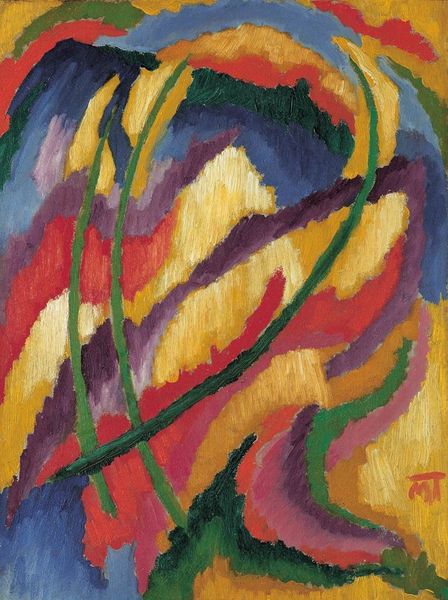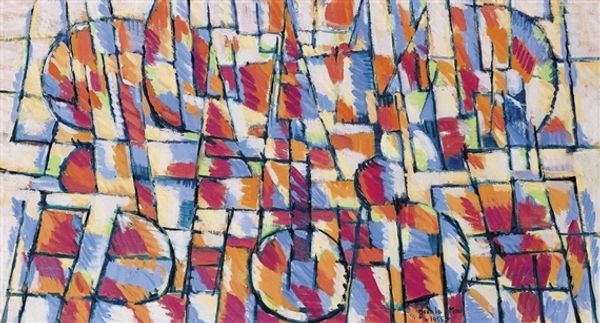
pastel
#
landscape
#
geometric pattern
#
abstract pattern
#
organic pattern
#
geometric
#
expressionism
#
abstraction
#
pastel
Copyright: Public domain US
Editor: This is Janos Mattis-Teutsch's "Blue and Red Landscape," created in 1918 using pastels. I'm really struck by how he manages to evoke a landscape, even though it’s so abstract and relies so heavily on color. How do you interpret this work, especially considering the historical context? Curator: It’s essential to view this piece through the lens of its time. 1918 was a pivotal year, the end of World War I. Artists like Mattis-Teutsch were grappling with profound social upheaval and the trauma of war. Does the swirling composition and high-key color palette hint at the instability of that period? Consider expressionism, what role it played in depicting inner emotional landscapes during such periods of conflict and change. Editor: That makes sense. The intense colors and swirling forms could definitely represent inner turmoil. It's not a peaceful landscape, more like an emotional one. I wonder why he chose these specific colors—the vibrant blues, reds, and yellows? Curator: Color is rarely arbitrary. Expressionists often used color to symbolize emotions and psychological states. What emotions do these colors evoke in *you*, and what societal connotations might they have held at the time, especially in light of the political climate and anxieties about nationalism? Remember too that expressionism and abstraction provided an escape from representational reality – a way to critique and question dominant ideologies indirectly. Editor: I see. So, rather than a literal landscape, it's a representation of the emotional landscape of a specific time and place. That shifts my understanding significantly. Curator: Precisely. Understanding the socio-political environment reframes how we look at even the most abstract forms. It invites us to consider art as a form of cultural commentary. Editor: I learned how deeply historical and social context are embedded in what I thought was 'pure' abstraction. Thank you for this different reading. Curator: And I'm reminded of how vital personal interpretation is, even when grounded in historical fact. The conversation between art and viewer is always dynamic, always evolving.
Comments
No comments
Be the first to comment and join the conversation on the ultimate creative platform.
